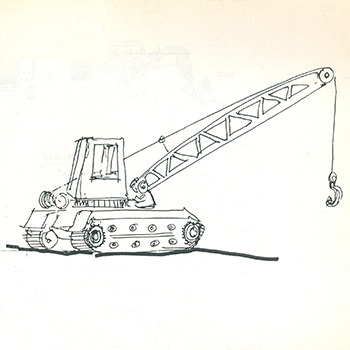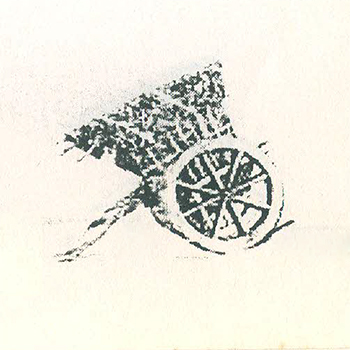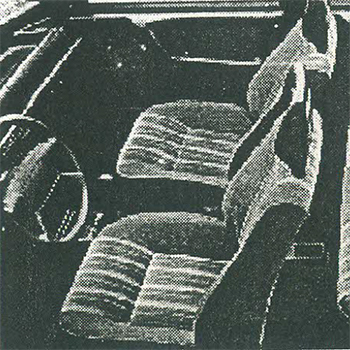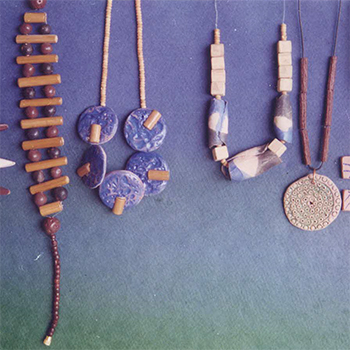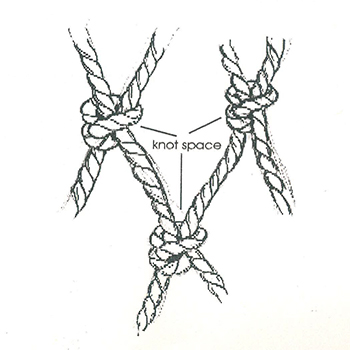Product Design
Batch 1996-1998
(17 items)
Product DesignBatch 1996-1998
(17 items)
(17 items)
by Abhinav Dapke
Introducing new products at an increasing rate is critical for remaining competitive in a global economy; decreasing product development cycle times and increasing product complexity necessitate new ways to realise innovative ideas. In response to these challenges, industry and academia have invented a spectrum of technologies that help to develop new products and broaden the number of product alternatives.
Most designers agree that "getting physical prototypes fast" is critical to exploring design concepts. The sooner designers experiment with new products, the faster they gain inspiration for further design changes.
The key idea in rapid prototyping is the decomposition of a difficult problem of manufacturing a complex 3D component into thin slices that are then physically realised in some manner. These slices are stacked and joined, giving us the required physical prototype.
During the art-to-part conversion in RP, none of the traditional manufacturing steps such as process planning, tool design, and material movement for machining are required. What is required is only designing the part and generating it with the help of software (using different operations).
by Atul A Rajwade
We humans in this world are in a situation where things are getting automated and new gadgets, machinery, and equipment, as well as computer software, are getting stuffed into our immediate environment.
It is not easy for humans to learn new things and handle new equipment. Unless there is a certain pattern and code applied while designing the equipment, it will be very difficult to operate a new machine. So one must take into consideration how the man will operate a vehicle or equipment that he hasn’t seen at all. This is known as "control motion expectancy" and, in ergonomic terms, falls under the chapter of stereotype and compatibility. In this special project, some research was accomplished on this topic, especially regarding material handling equipment. Also in this project, an experiment was carried out to determine the stereotyped reactions of the people controlling material handling equipment (the movements of which are taking place on the rear side of the operator).
It is postulated that, greater the degree of compatibility, the less re-coding must be done to process the information. This in turn results in faster learning, a faster response time, fewer errors, and a reduced mental workload.
by Charuta Bobade
In the olden days, palakis or menas, which are structures carried on shoulders by slaves, were a popular means of transport. Other means of transportation were riding on tamed animals like elephants, horses, donkeys, and camels. Then the carriages were combined with animals to form bullock carts or horse carts. Let the transportation be of any kind the owner uses to make it himself or under his supervision. Everything in the vehicles has the personal touch of the individual using them, from saddles on horses to cushions and curtains in Palakis, to the point of making them a work of art without sacrificing their functional value.
Personalisation is a psychological need for human beings. If there had been a natural difference in the looks of people showing their educational and economic status in society, the need for personalization would not have been there. This need for personalization is specifically observed in objects used by human beings. We like to create our own environment around us. In today's time of "mass manufacturing," we have to add our own touch to the things we buy, to give them a sense of belonging. This gives scope to our creativity and adds colour to our lives. This gives identity to the product. Thus, anything we buy, may it be a bag, a house, or even a car, we like to add our personal touch to it. While doing this value addition, we might borrow ideas from elsewhere. Thus, we find lots of car accessories to be direct derivatives of house accessories.
by Devesh A Desai
If the exterior shape is currently born more out of technology than art, the interior remains a domain almost entirely dominated by creative instincts. There are the inevitable ergonomics and human factors to be considered, of course, and the package envelope developed according to the engineering rules has to be the starting point, but the final appearance of the interior is essentially decided by artists and designers.
As in the domestic and commercial fields of interior design, there are strong outside influences coming to bear on the actual style of how the car looks inside, what is acceptable in taste, and how far the thresholds of appearance and material usage can be pushed. For example, it took several years for cloth fabrics to meet the durability standards required for high-wear areas such as a car seat surface, and even longer for plastic moulding technology to allow the production of a rattle-free full-width facia.
Within the industry itself, the interior designer’s job carried much less prestige than the major role of creating the outside shape. Exteriors carry a much stronger identity, both for the company and the individuals responsible, although ironically, it is the interior that the buyer has to live with more closely throughout his period of ownership. No car was ever bought on the strength of its interior alone, however.
During the initial post-Second World War recovery in Europe, the priority was simply for cars to fill the void of independent transport. As long as it worked, it was acceptable in the strong seller’s market that prevailed. Practical black or natural tan interior colours in any hard-wearing material were the rule because they blended neutrally with all exterior colour ranges. There was little thought for comfort in the modern sense, none of the sophisticated moulding techniques for foam. Trim and carpets were tailored, stitched, and clipped in place using methods not far removed from the traditional coach-building crafts.
Generally, though, in the period up to 1970, little creative talent was displayed in the car interior. There were distinctive styles, such as the traditional wood-veneer fascia panels of luxury models, which found their way right down to American fashion for color-keyed interiors. However, most popular vehicles exhibited a distinct lack of integration, with painted dashboards, exposed seat runners and lower frames, visible window mouldings, and an abundance of exposed screw heads. Instruments were still separate gauges with bright rims, black faces, and white spindly needles covered by reflecting glass. Switches were placed wherever there was room on the fascia, and steering wheels had black shiny rims mounted on sprung wire spokes. In large corporations, interior design work was physically divided at the steering wheel, with one team handling everything in front and another handling everything behind. The segregation showed clearly in the product.
The role of interior designer has changed and is expected to change further in the future. Interiors of automobiles have changed and will continue to change. Car interiors are given equal attention as this has helped in adding real value to the vehicle as a product. Though the interior designer is not much of a celebrated figure, media attention is picking up on this aspect too. And businesses will undoubtedly profit from it.
by Jawwad I Khan
The personality of a person is a very complex issue. There are various factors that contribute to the development or projection of one's personality. A person's personality will to a great extent depend upon the family background, its values, and beliefs. A person may either be a strong follower of these beliefs or become rebellious. This type of behaviour is very much influenced by the person's influence in the outside world and his experiences in the past.
The physical attributes of the person create some sort of halo effect. It may either uplift or lower one's personality are,
- Physique: body dimensions
- Appearance: skin colour, looks, dressing, hair style, body make- up etc.
- Behaviour pattern: the person's body gestures, behaviour, and communication styles while interacting with others.
Personality is definitely moulded in some way or another through the education or knowledge one attains in life. The person's personality or image is often weighed against his qualifications in social circles.
The culture factor plays an important role in projecting one's personality or image. A person from a rural area may project a different image from that of a person residing in an urban area. This is actually due to the cultural differences that exist between the two. This difference can be minimised by exposing the person to a culture other than his own and by the person's willingness to undergo change.
Human psychology is a very important factor in projecting a person's actual image. With a change in the individual's mental state, a charming personality can suddenly become arrogant and irritating. The temperament and patience of the person play a very important role in image projection in the changing surroundings and events that take place.
by Jevak Badve
In the midst of the never-ending tussle of work and work, one must make time to entertain oneself. He must find a way to entertain himself. It could be a Chaplin film or a practical joke; a chess game or an afternoon nap; a mug of coffee or a casual whistle. checking e-mail, watching a movie, traveling, or learning.
Thus, in order to stay "alive," each of us has devised some method or another. Some people simply work for them. They range from musicians to painters, illustrators, and film directors. Computer hackers to gossip mongers, magazine editors to humble cartoonists.
by Nachiket Tahkur
The mad scramble for power, authority, and one-upmanship has taken a toll on the entire human race. Every other person is seen clamouring for more. He can do anything to get hold of the "magic" that will help him reach the top; however, it is not at all simple. To accomplish the impossible, he must overcome numerous physical and mental challenges. To fulfil his never-ending needs, he taxes himself in many ways. This race to remain on top destroys his psychological and mental stability. Every now and then he takes help from something or other to overcome the anguish and disturbance in his mind and body. Physical ailments can be treated with surgery and other methods. What is difficult to achieve is mental stability. He requires a companion to whom he can relate in times of distress.
Secondly, the situation in which you are not under any kind of tension or stress For example, all the leisure activities are done in solitude. It can be talking endlessly on your phone to your girlfriend, two housewives talking on the phone, people watching television, reading, or getting lost in sweet memories. People often tend to fiddle with the things they lay their hands on, so give such people some interesting alternatives.
by P N Chakravarthy
An auspicious beginning to any task is with "Sri Ganesha," the most beloved of all gods. People have an emotional attachment to this god. They feel closer to this god than to any other; perhaps this is why they take more liberties when creating forms of Gajanana, whether an idol or a graphic image. For example, people accepted the Ganesh form as a paper weight, flower vase, pencil box, etc. It has become a decorative piece with a lot of expression. Another reason is that the god having an elephant head and a human body lends itself to very interesting combinations. This phenomenon of variation in a given form is known as "mutation," though this is not its dictionary definition.
Mutation is the process of deforming by removing a material part. Mutilate means to damage by breaking, tearing, or cutting off a necessary part, destroying the use. God's form is shown in such a way that it lost its original identity as a divine image and became an artist’s creative character. Here mutilation is not in the literal sense, it is transformation to a great extent. People are depicting the elephant god form for many different purposes, so the transition is too much.
Mutilation is not only because of Ganesha's popularity, graphic potential of this half-human, half-animal body gave enough scope to create so much of his interesting form. Not only that, but the psychological attachment that people have with this god is also responsible for this. It is not possible to mutilate other god forms as it is happening with the elephant god form because many factors are involved in this, including sociocultural factors, psychological factors, and religious factors.
by Parag Trivedi
Jewellery is a decorative art, and what matters is not the words that can be coined from it, but whether or not it gives pleasure to the wearer and spectator.
India's jewellery industry is on a scale that few can match. It appears that a unique ornament was required for each part of the human body. However, the significance of Indian jewellery extends beyond its size; in terms of variety and aesthetics, it is a part of Indian culture.
by Patil Bhushana
Sheet metal is currently being used extensively in a variety of product assemblies. Though commodity and engineering plastics have contributed a lot towards replacing the metals used in products, for specific applications like heat, stress, durability, and some stringent working conditions, one has to go for the metals. As product designers, we spend the majority of our time designing parts and components for assemblies using sheet metal.
During the design stages, the designer always specifies or assumes some of the materials for the final product that will be sold. For this material selection, the designer has to be really keen about the materials and their behaviour in practice. Also, he should be able to judge the material's susceptibility and durability. To decide in advance on these factors, the designer should take into account some guidelines that will help him make a decision.
The majority of the time, the product designer works with sheet metal as a construction material. For the designer to specify the material for any component, he must understand the material's limitations and advantages in order to get the most utility out of the product and material from this selection.
The purpose of this topic is to set guidelines for the designer that enhance his knowledge of what he can do to reduce the very high cost of failures caused by wrong material selection or wrong design of the components. Because design is the first stage in the launch of any product, taking proper care in selecting the material can save a lot of money rather than repairing the mistake after the product goes into production.
So, in terms of economy and life efficiency, the designer should always have some guidelines in hand as a basis for the selection of materials here, particularly sheet metal. The majority of the sheet metal components are either stamped, formed, bent, etc., or designed with some special techniques like edge folding, denting, drilling, etc. When choosing metals, the main consideration that draws attention from a product design standpoint is the treatment given to the open edges of sheet metal, as many problems such as:
-Edges are the starting points of corrosion.
-Open sharp edges in assemblies can cause some injury.
-From a design point of view, edges are the major areas that give strength and shape to the sheet metal component.
-Open sharp edges are neither aesthetically appealing nor adopted as design features in the product.
-At the edges, the anticorrosive coatings also become inefficient because of the non-uniform thickness of the coating associated with the open edges. As a result, the edges are given the most attention in this topic.
by Pradeep Joseph
The study of automobiles is like an endless sea. It's easy to get lost and not reach the shore. It requires the experience and dexterity of a seasoned navigator to get you on shore. The coachbuilding industry was heavily involved in the construction of the cars back then. Because of the method of fabrication, many of the cars were custom built, much like a horse-drawn carriage or a truck.
Wood was the chief material used during those times to construct the body shell with metal joinaries. Metals such as stainless steel and alloys such as brass were widely used for decorative purposes.
The headlights, windshield framework, horn, and rearview mirrors, among other things, had a shiny metallic appearance. The theme was carried through to the car interiors as well.
by Ratnam B V
by Sandeep Thombre
What would a modern civilised man be like without the soft art of weaving that surrounds his home with comforts and lies with luxury?
Weaving is one of the oldest crafts. The best part of the weaving craft was that it did not require any tools for working. It all started when men started interlacing the twigs of trees beside the river, which evolved into a weave. The same principle of weaving was developed and explored further with different materials, taking into consideration the physical properties of the material, and going further to make woven cloth from fibers.
Weaving began by creating a flat surface of 2D form in the form of mats as needed. But with the influence of pottery coming in, some flat weaves were wrapped around the clay form, which evolved into a 3D form through weaving. Then came the evolution of the woven basket. Woven baskets are the best examples of 3D forms created through weaving.
by Shikha Varshney
During the early stages of design exploration, designers and architects tend to treat freehand sketching as a mirror of their minds. The spontaneity of conventional sketching is undoubtedly important for the designer’s thinking process. CAD systems and their contrived interfaces do not offer the advantages that sketching does. But, can modern technology offer a tool that the designers would readily accept for their creative explorations?
The research is based on a visualisation of a hypothetical system in which the designer creates a representation of three-dimensional shapes of reasonable complexity while sitting in front of a terminal. Using his gestures and limited speech, he inputs into the computer an online representation of shape. This feedback is available to the designer live on his monitor. The experiments reported here test this hypothetical system using simulation.
Gestures involve spatial movements, and they could be more convenient tools for the designers to express spatial ideas. This paper aims to identify the potentials and limitations of natural gestures as a source of shape information by focusing on shape modelling in the computer during the design process.
by Shyam Sunder B K
Every object is not just a shape or form. When a craftsman creates it, a definite design is worked out through basically organic or geometrical shapes. When the designs are repeated on a surface, a whole rhythmical composition emerges. A rhythm is worked out by relating the size of the motif to the surface by alternating positive and negative space or varying the size of the motifs. Design can be two- or three-dimensional, projected through texture, color, and the variations throughout created by the interplay of light and shade in an object. Man has always tried to accentuate certain basic qualities of materials through further ornamentation. These methods could be painting, carving, lacquering, planting, glazing, inlaying, etc.
This study examines a few examples of inlay craft from the past, their analysis for motifs and materials used, the origins of this craft in India, the types of inlay that were used, and specifically inlay on wood. Inlay work is very pleasing to the eye and can afford a good deal of aesthetic pleasure. This craft has been attempted on a variety of materials, including marble, metal, and wood, with inlay materials such as mother of pearl and coloured stones on marble, tortoise shell and sea shells, animal bones, gold and silver on metal, ivory, plastic, natural-colored wood, and so on.
It is interesting to understand this process of inlay and try to formulate a rule that will direct us to apply this technique to materials that have not been tried so far. Another important aspect is that in the present world of imitation, craft is losing its importance, which is not a positive sign. So it is important to develop this craft and find an application in the utility area that can be easily mass produced.
by Suparna Dani
by Yogesh S Dandekar
Man has always needed three-dimensional expression, and paper mache is a cheap and easy material to use that has the advantage of drying naturally to a hard and durable substance without necessarily having to be baked like clay. In IDC, some work has already been done on the paper mache and its techniques. This project is a phase of this study devoted to the research of paper mache in various applications in IDC.
By the end of the second century AD, the Chinese had invented paper, made from mulberry bark, cotton, vegetable fibers, and linen rags. Papermaking was slow, laborious, and therefore expensive, so it would follow that good things were to be made from off-cuts and scraps. Two paper mache helmets, toughened by lacquer, that survive from this period are the first examples of paper mache. Paper mache started getting used extensively for elaborately decorated and ornate furnishings that we see in museums. But the decline in the use of this material was revived by the French in the 18th century. Paper mache actually means chewed-up paper. Trays, boxes, and even furniture were often made with inlaid pearls.

